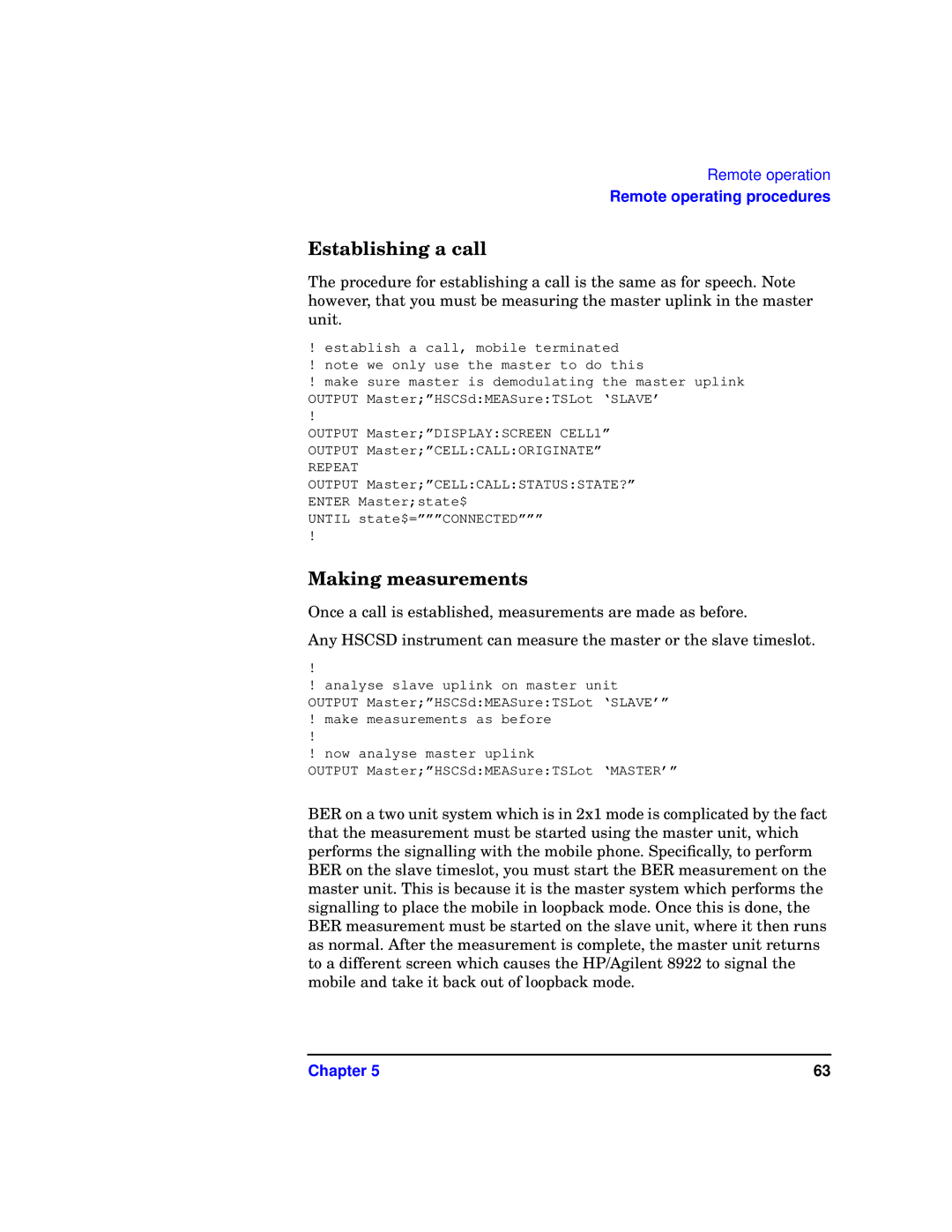Remote operation
Remote operating procedures
Establishing a call
The procedure for establishing a call is the same as for speech. Note however, that you must be measuring the master uplink in the master unit.
!establish a call, mobile terminated
!note we only use the master to do this
!make sure master is demodulating the master uplink OUTPUT Master;”HSCSd:MEASure:TSLot ‘SLAVE’
OUTPUT Master;”DISPLAY:SCREEN CELL1” OUTPUT Master;”CELL:CALL:ORIGINATE”
REPEAT
OUTPUT Master;”CELL:CALL:STATUS:STATE?” ENTER Master;state$
UNTIL state$=”””CONNECTED”””
Making measurements
Once a call is established, measurements are made as before.
Any HSCSD instrument can measure the master or the slave timeslot.
!
!analyse slave uplink on master unit OUTPUT Master;”HSCSd:MEASure:TSLot ‘SLAVE’”
!make measurements as before
!
! now analyse master uplink
OUTPUT Master;”HSCSd:MEASure:TSLot ‘MASTER’”
BER on a two unit system which is in 2x1 mode is complicated by the fact that the measurement must be started using the master unit, which performs the signalling with the mobile phone. Specifically, to perform BER on the slave timeslot, you must start the BER measurement on the master unit. This is because it is the master system which performs the signalling to place the mobile in loopback mode. Once this is done, the BER measurement must be started on the slave unit, where it then runs as normal. After the measurement is complete, the master unit returns to a different screen which causes the HP/Agilent 8922 to signal the mobile and take it back out of loopback mode.
Chapter 5 | 63 |
